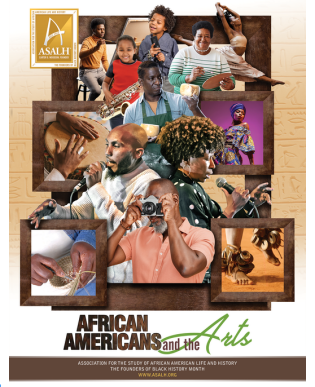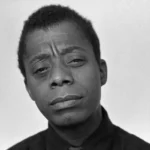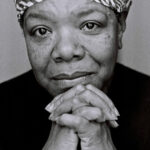Langston Hughes, born James Mercer Langston Hughes on February 1, 1902, in Joplin, Missouri, was a leading literary figure of the Harlem Renaissance, a major cultural movement of the 1920s and 1930s that celebrated African American cultural contributions and sought to redefine the Negro identity in American society. Hughes’s work is renowned for its insightful and vivid portrayals of black life in America, its rich linguistic heritage, and its critique of racial inequality.
Family Background
Hughes was born to Carrie Langston and James Nathaniel Hughes. His parents separated soon after his birth, and his father moved to Mexico. Hughes was raised primarily by his maternal grandmother, Mary Patterson Langston, in Lawrence, Kansas, after his mother moved to seek employment. His grandmother’s stories about abolitionists and her husband’s (Hughes’s grandfather) activism in the fight against slavery greatly influenced Hughes. After his grandmother’s death, Hughes lived with various family members before settling with his mother and her new husband in Lincoln, Illinois, and later Cleveland, Ohio.
Education
Hughes’s formal education began in the integrated schools of Lincoln, Illinois, and Cleveland, Ohio, where he started writing poetry. He graduated from high school in Cleveland, where he was elected class poet and began to develop his unique style of writing. Hughes attended Columbia University for a year (1921-1922) but left due to racial prejudice and dissatisfaction with the academic environment. He later attended Lincoln University, a historically black college in Pennsylvania, where he graduated in 1929. His time at Lincoln University helped to solidify his desire to write poetry and work that reflected the African American experience.
Literary Career and Famous Works
Hughes’s literary career was launched with the publication of “The Negro Speaks of Rivers” in 1921, a poem that became one of his most celebrated works. Throughout his career, he wrote poetry, short stories, novels, plays, essays, and children’s books. Some of his most famous works include:
- Poetry: “The Weary Blues” (1926), “Fine Clothes to the Jew” (1927), and “Montage of a Dream Deferred” (1951).
- Novels: “Not Without Laughter” (1930) – Hughes’s debut novel which explores the life of an African American boy growing up in Kansas.
- Short stories collections: “The Ways of White Folks” (1934), a collection of stories that depict the racial climate of the 1920s and 1930s.
- Plays: “Mulatto” (1935), which explores the complexities of race and identity.
- Non-fiction: “The Big Sea” (1940), an autobiography that details his life and travels, and “I Wonder as I Wander” (1956), which recounts his various experiences abroad.
Accomplishments and Contributions to Black History
Hughes played a pivotal role in the Harlem Renaissance, contributing significantly to its literary and artistic achievements. His work celebrated African American culture, challenged stereotypes, and addressed issues such as racism, inequality, poverty, and the quest for social justice. Hughes was a pioneer in using jazz rhythms and dialect to depict the life of urban blacks in his poetry, a technique that influenced future generations of writers.
He was also involved in various social and political causes, using his writing to advocate for civil rights and the unity of the African diaspora. Hughes’s commitment to black culture and his efforts to portray the truth of African American lives and struggles have cemented his legacy as a key figure in American literature and black history.
Hughes passed away from complications of prostate cancer on May 22, 1967, in New York City. His residence at 20 East 127th Street in Harlem, New York City, has been given landmark status, and the street was renamed “Langston Hughes Place” in his honor. Through his prolific career and enduring impact, Langston Hughes remains an iconic figure, not only in African American literature but in the broader context of American cultural history.
Top 20 Interesting facts about Langston Hughes
- Who was Langston Hughes?
- Langston Hughes was an American poet, social activist, novelist, playwright, and columnist, best known as a leader of the Harlem Renaissance.
- When and where was Langston Hughes born?
- Hughes was born on February 1, 1902, in Joplin, Missouri, USA.
- What is Langston Hughes famous for?
- He is famous for his contributions to the Harlem Renaissance and his vivid and influential writings that celebrate African American culture and life.
- What was the Harlem Renaissance?
- The Harlem Renaissance was an intellectual, social, and artistic explosion centered in Harlem, New York, spanning the 1920s and 1930s, celebrating black culture and advocating for civil rights and equality.
- What are some of Langston Hughes’s most famous works?
- Some of his most famous works include “The Negro Speaks of Rivers,” “The Weary Blues,” “Montage of a Dream Deferred,” and “Not Without Laughter.”
- Did Langston Hughes write novels?
- Yes, Hughes wrote novels, including “Not Without Laughter” and “Tambourines to Glory.”
- How did Langston Hughes contribute to civil rights?
- Hughes contributed to civil rights through his writings that addressed racial injustice, celebrated African American culture, and advocated for equality and social justice.
- What themes did Hughes explore in his writings?
- Hughes explored themes such as racial pride, the African American experience, equality, social justice, and the beauty of black culture.
- Was Langston Hughes involved in any political movements?
- Hughes was not directly involved in political movements but used his writings to support civil rights and social justice causes.
- How did Langston Hughes die?
- Hughes died on May 22, 1967, from complications related to prostate cancer.
- Where did Langston Hughes go to college?
- Hughes attended Columbia University for a brief period before transferring to Lincoln University in Pennsylvania, where he graduated.
- Did Langston Hughes have any children?
- No, Langston Hughes never married and had no children.
- What was Langston Hughes’s view on religion?
- Hughes’s views on religion were complex; he was critical of religious hypocrisy but often included religious themes and references in his works.
- How did Langston Hughes impact the Harlem Renaissance?
- Hughes was a leading figure of the Harlem Renaissance, inspiring a generation of writers and artists with his innovative use of jazz rhythms and dialect to depict African American life.
- Did Langston Hughes write for children?
- Yes, Hughes wrote books for children, including “The Dream Keeper and Other Poems” and “Popo and Fifina.”
- What awards did Langston Hughes receive?
- Hughes received several awards, including the Spingarn Medal from the NAACP for his works’ outstanding achievements.
- How is Langston Hughes remembered today?
- Hughes is remembered as a literary giant who articulated the joys and sorrows of the African American experience, with his work continuing to influence writers and activists.
- Did Langston Hughes write autobiographies?
- Yes, Hughes wrote two autobiographies, “The Big Sea” and “I Wonder as I Wander.”
- What was Langston Hughes’s influence on music?
- Hughes influenced music by incorporating jazz and blues rhythms into his poetry, contributing to the development of jazz poetry.
- How did Langston Hughes’s upbringing influence his work?
- His upbringing, marked by racial discrimination and a strong sense of cultural heritage, profoundly influenced his desire to express the realities and beauty of African American life through his writings.




